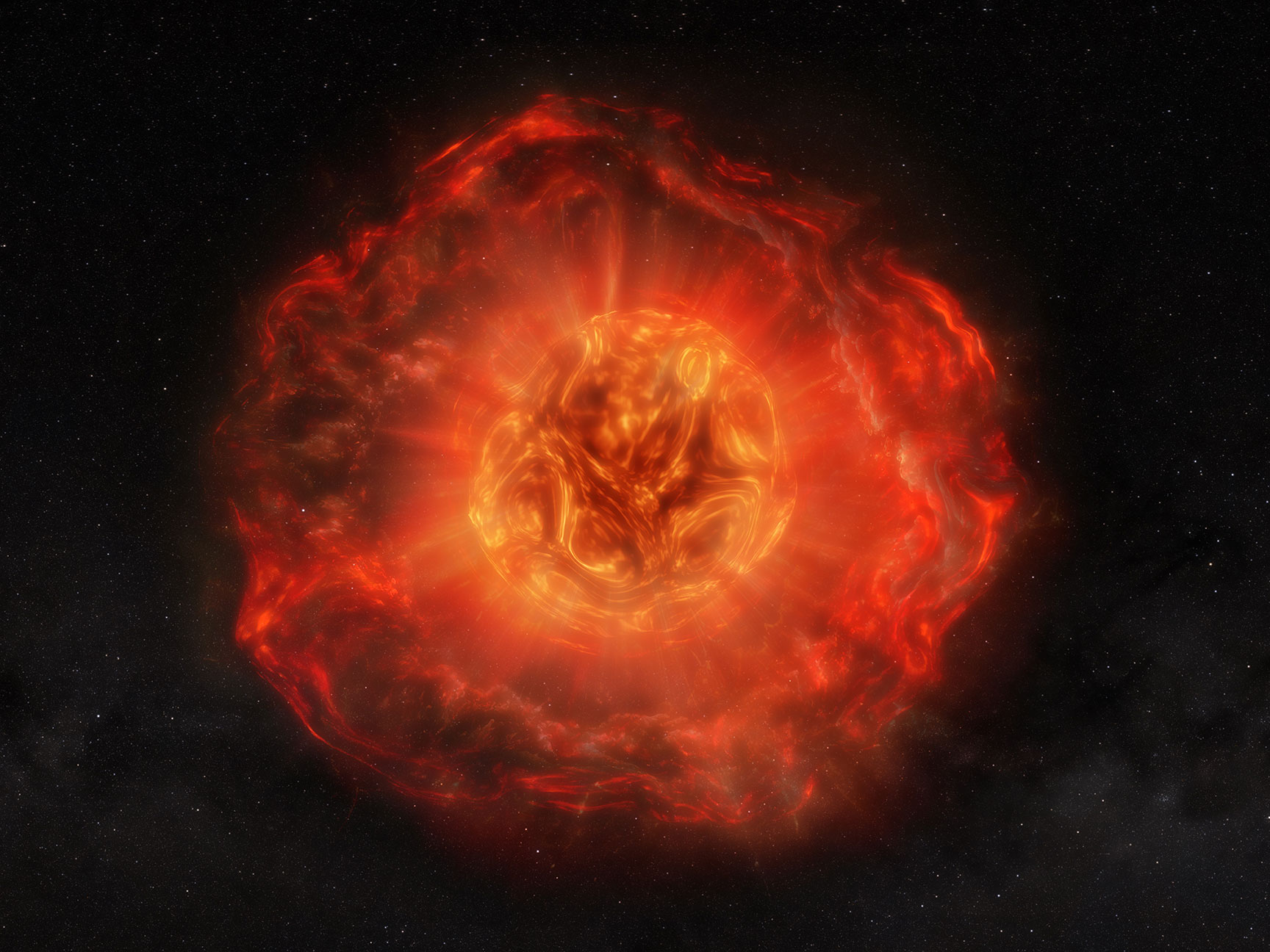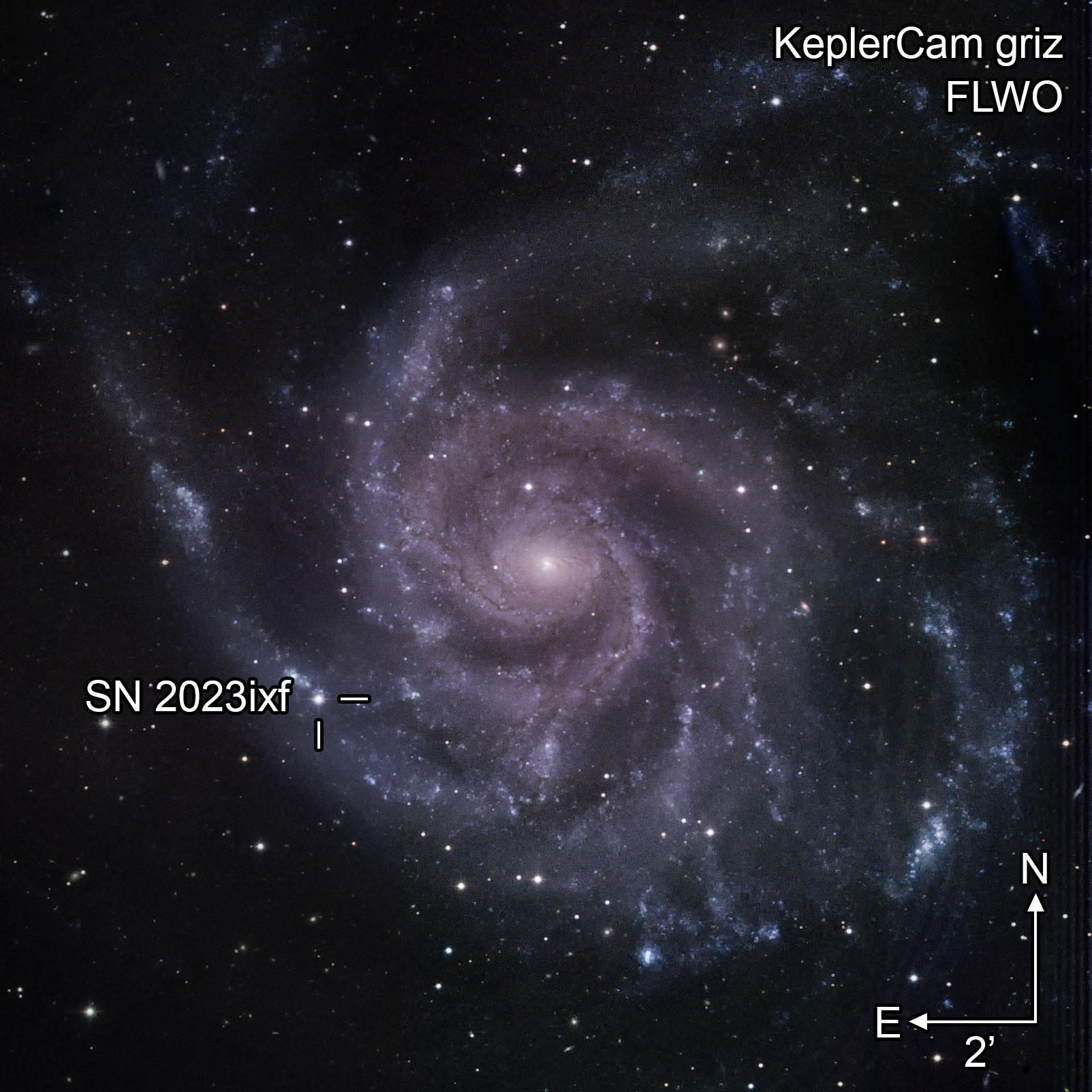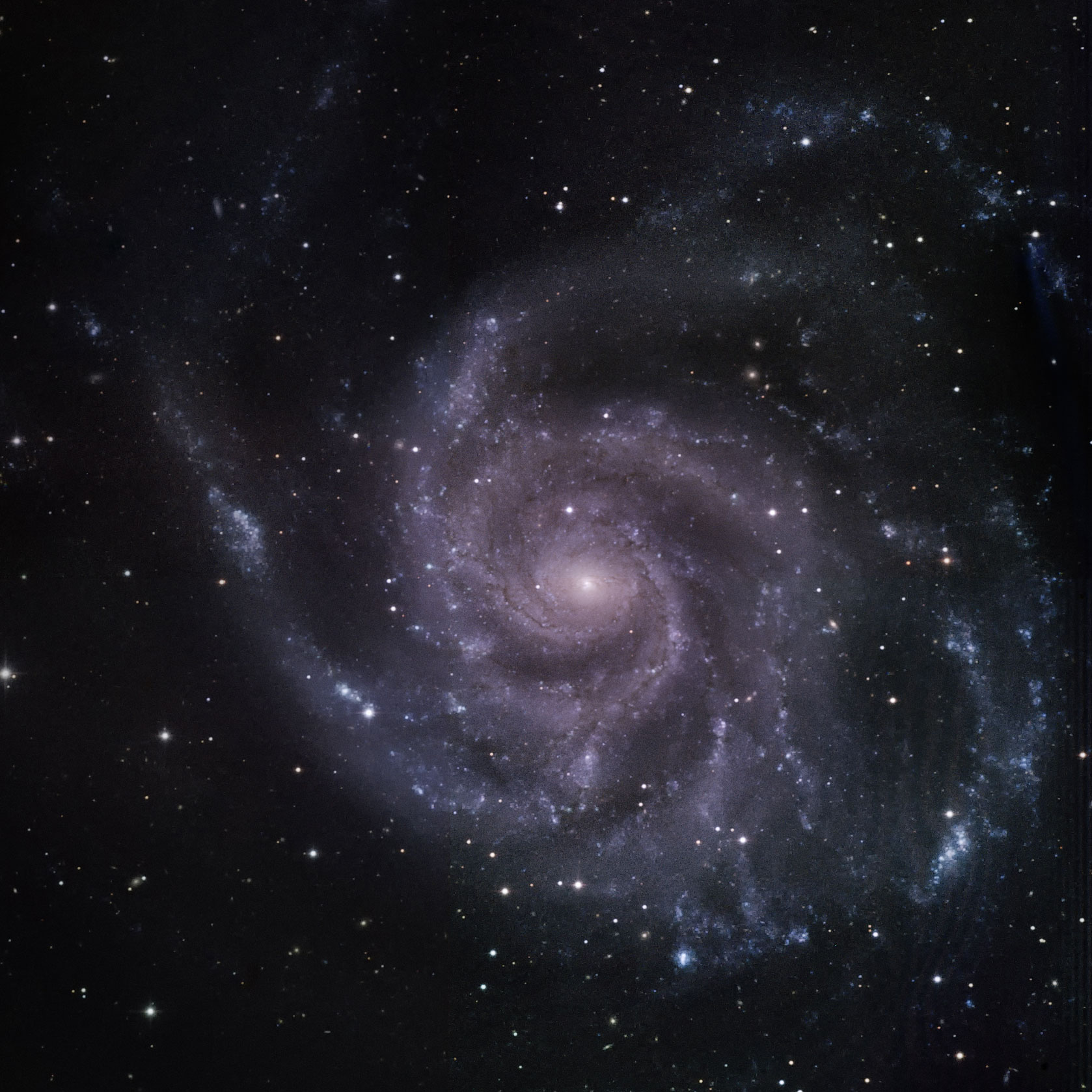Image List
-

Artist's conception of pre-explosion mass loss by the progenitor star of SN 2023ixf. In the year prior to going supernova the red supergiant star now known as SN 2023ixf shed an unexpected amount of mass equivalent to the mass of the Sun. This artist's conception illustrates what the final stages of mass loss might have looked like before the star exploded.
Credit: Melissa Weiss/CfA -

Artist's conception of SN 2023ixf. One of the nearest Type II supernovae in a decade and among the brightest to date, SN 2023ixf is a young supernova, discovered earlier this year by amateur astronomer Kōichi Itagaki of Yamagata, Japan. This artist’s conception shows the bright explosion of SN 2023ixf, which occurred after an unexpected amount of mass loss unlike anything astronomers have seen before.
Credit: Melissa Weiss/CfA -

Composite KeplerCam griz image of SN 2023ixf. Captured using the 1.2m telescope at CfA's Fred Lawrence Whipple Observatory on June 27, 2023, just over a month after SN 2023ixf's progenitor star exploded, the image in this composite combines together green, red, near-infrared and infrared light to highlight both SN 2023ixf and the Pinwheel Galaxy. SN 2023ixf is located in one of the spiral arms of the galaxy, as expected for the explosions of massive stars.
Credit: S. Gomez/STScI -

Unlabeled composite KeplerCam griz image of SN 2023ixf. Captured using the 1.2m telescope at CfA's Fred Lawrence Whipple Observatory on June 27, 2023, just over a month after SN 2023ixf's progenitor star exploded, the image in this composite combines together green, red, near-infrared and infrared light to highlight both SN 2023ixf and the Pinwheel Galaxy. SN 2023ixf is located in one of the spiral arms of the galaxy, as expected for the explosions of massive stars.
S. Gomez/STScI